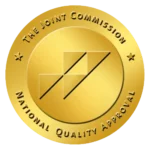Bipolar II disorder, a subtype of bipolar disorder, is characterized by recurrent episodes of depressive and hypomanic states, unlike its counterpart, bipolar I, individuals with bipolar II experience milder manic episodes, known as hypomania, which may go unnoticed or be dismissed.
This disorder often goes undiagnosed or misinterpreted, as the hypomanic phase can be mistaken for normal mood fluctuations. The oscillation between depressive lows and elevated but less extreme highs poses unique challenges for those affected, impacting daily functioning and relationships.
Understanding this complex disorder is vital to supporting individuals affected by its challenging cycles of emotional extremes.
Key Takeaways
People with bipolar II disorder cycle between depressive and hypomanic episodes. Here’s what you need to know:
- Bipolar II disorder is characterized by recurrent episodes of depression and hypomania, a less severe form of mania.
- Unlike bipolar I disorder, individuals with bipolar II never experience full-blown manic episodes.
- Proper diagnosis and treatment can help in managing symptoms and improving the quality of life for those with bipolar II disorder.
Contact The Haven Detox-Little Rock at (501) 271-3342 for more information and personalized guidance to embrace long-term mental well-being.

Introduction to Bipolar II Disorder
Bipolar II disorder is a mood disorder characterized by recurrent depressive episodes and hypomanic episodes, a less severe form of mania. Individuals with bipolar II experience intense mood swings, shifting between periods of deep sadness and elevated, energetic states.
Unlike Bipolar I, full-blown mania doesn’t occur in bipolar II, but hypomania can still impair daily functioning. Diagnosis is challenging as depressive episodes often lead individuals to seek help, overshadowing the hypomanic phases.
Recognizing the Symptoms of Bipolar II Disorder
Hypomanic episodes are less severe than full-blown manic episodes, which are seen in bipolar I disorder.
Here are the most common associated symptoms of bipolar II disorder:
Manic Episode Symptoms
- Increased Energy: Elevated levels of energy and a heightened sense of activity.
- Decreased Need for Sleep: Feeling rested with significantly less sleep than usual.
- Racing Thoughts: Rapid thought patterns, difficulty concentrating, and often feeling easily distracted.
- Talkativeness: Excessive talking, often very fast-paced.
- Grandiosity: Inflated self-esteem, unrealistic beliefs about one’s abilities, and a sense of being on a special mission.
- Impulsivity: Engaging in activities with a high potential for painful consequences, such as reckless driving, excessive spending, or risky sexual behavior.
- Increased Goal-Directed Activity: Being excessively involved in various activities, often with a sense of purpose or goal that may be unrealistic.
- Excessive Pleasure-Seeking: Pursuing pleasure with little regard for the potential negative consequences.
Depressive Episode Symptoms
- Persistent Sadness: Feeling sad, empty, or hopeless for an extended period.
- Loss of Interest or Pleasure: Decreased interest or enjoyment in once enjoyable activities.
- Changes in Appetite or Weight: Significant weight loss or gain or changes in appetite.
- Sleep Disturbances: Insomnia or hypersomnia (excessive sleep) nearly every day.
- Fatigue: A general feeling of tiredness or lack of energy.
- Feelings of Worthlessness or Guilt: Persistent negative thoughts about oneself, often accompanied by feelings of guilt or worthlessness.
- Difficulty Concentrating: Trouble focusing, making decisions, or remembering things.
- Psychomotor Agitation or Retardation: Either being excessively restless or slowed down in movement and thought.
- Suicidal Thoughts: Thoughts of death, suicide, or suicide attempts.
Differences Between Bipolar I and Bipolar II Disorder
Bipolar I disorder involves manic episodes lasting at least seven days or severe enough to require hospital care. In contrast, bipolar II disorder includes hypomanic episodes and major depressive episodes but lacks the extreme manic episodes seen in bipolar I.
Comparison of Symptoms and Episodes in Bipolar I and II
When comparing symptoms and episodes, it’s crucial to recognize that individuals with bipolar I may experience more severe manic episodes, often accompanied by psychotic features. In contrast, those with bipolar II encounter less intense and disruptive hypomanic episodes.
Comparing Treatment Approaches for Bipolar I and II
Treatment approaches for bipolar I and II differ, with medications like mood stabilizers, antipsychotics, and antidepressants commonly prescribed. Psychotherapy, especially cognitive-behavioral therapy (CBT) and psychoeducation play a pivotal role in managing both disorders.
However, the emphasis on medication and therapy may vary based on individual symptoms and needs.
Causes and Risk Factors of Bipolar II Disorder
Bipolar II disorder, marked by extreme mood swings between depressive episodes and hypomanic states, is influenced by various factors.
Genetic Predisposition
A significant cause lies in genetics, as individuals with a family history of mood disorders are more vulnerable to bipolar II disorder. Genetic factors like life events interact with environmental stressors, triggering the disorder’s onset.
Neurotransmitter Imbalances
Brain chemistry plays a crucial role, with imbalances in neurotransmitters like serotonin and dopamine affecting mood regulation. Disruptions in these chemicals contribute to the characteristic mood fluctuations in symptoms of bipolar disorder.
Impact of Trauma and Stress
Early life stressors, including childhood adversity, abuse, or neglect, can influence brain development, increasing vulnerability to mood episodes later in life. High-stress environments and chronic stress are also significant contributors.
Substance Abuse as a Risk Factor
According to research, substance use disorder, particularly drugs or alcohol, heightens the risk of bipolar II disorder. It can intensify mood swings, interfere with medication efficacy, and trigger hypomania or depressive episodes.
Medical Conditions and Their Role
Certain medical conditions, such as thyroid disorders or neurological issues, elevate the risk of bipolar II disorder. Addressing and managing these underlying health issues are crucial to reducing the likelihood of mood disturbances.
Diagnosis Process for Bipolar II Disorder
Diagnosing bipolar II disorder involves a comprehensive assessment conducted by mental health professionals.
The process typically includes the following steps:
Mental Health Evaluations
During evaluations, mental health professionals assess mood patterns, behavior changes, and emotional states. They engage in open conversations to understand symptoms like mood swings, energy levels, and sleep patterns.
Questions may explore personal and family history to identify potential genetic factors.
Medical Tests and Observations
Physical health is crucial in bipolar II disorder diagnosis. Medical and blood tests help rule out other conditions with similar symptoms. Observations of sleep patterns, energy levels, and daily routines provide valuable insights.
A collaborative approach between mental health professionals and medical experts ensures a holistic assessment. Combining information from mental health evaluations and medical tests allows for a more accurate diagnosis.
Early detection and proper understanding of major depressive disorder to effective treatment strategies, improving the overall well-being of individuals.
Regular check-ups and ongoing communication with healthcare providers help manage the disorder effectively.
Treatment Options for Bipolar II Disorder
Treatment options for bipolar II disorder typically include a combination of medication, electroconvulsive therapy, and lifestyle changes. Individuals with bipolar II disorder need to work closely with healthcare professionals to develop a personalized treatment plan.
Here are common treatment options:
Medication Treatments
Pharmacotherapy is a cornerstone in treating bipolar II disorder. Mood stabilizers such as lithium are commonly prescribed to regulate mood swings. Anticonvulsants like valproate and lamotrigine may also be utilized.
Additionally, atypical antipsychotics, such as quetiapine and olanzapine, may help manage severe symptoms. Careful medication management, including regular monitoring for side effects, is crucial for optimizing treatment outcomes.
Psychotherapy Treatment
Psychotherapy or talk therapy plays a pivotal role in addressing the psychological aspects of bipolar II disorder. Cognitive-behavioral therapy (CBT) helps individuals recognize and modify maladaptive thought patterns. Interpersonal and social rhythm therapy (IPSRT) assists in regulating daily routines to stabilize mood.
Psychoeducation is often integrated, providing patients and their families with essential information about the disorder and coping strategies.
Lifestyle Changes and Coping Mechanisms
Complementary to medical and psychological interventions, lifestyle modifications are integral. Maintaining a consistent sleep schedule, adopting a balanced diet, and engaging in regular exercise contribute to overall well-being.
Stress reduction techniques, mindfulness, and support groups provide additional coping mechanisms. Recognizing early warning signs and developing a personalized crisis plan empower individuals to navigate the challenges associated with bipolar II disorder effectively.
Living With Bipolar II Disorder
Living with bipolar II disorder can be challenging, but understanding your condition is the first step. Embracing a routine and healthy lifestyle helps manage mood swings. Open communication with loved ones fosters understanding and support for managing bipolar symptoms.
Building Personal and Professional Support
Create a strong support network by sharing your journey with friends and family members. Engage in therapy to develop coping strategies. Communicate with colleagues about your needs at work, fostering a supportive professional environment.
Recognizing and Managing Bipolar II Episodes
Awareness is crucial in identifying bipolar II episodes. Track mood changes and triggers. Develop an action plan with your therapist to navigate both depressive and hypomanic states. Staying connected with your support system is vital during these times.
Bipolar II Disorder and the Importance of Mental Health Care
Prioritize mental health care to manage bipolar II disorder effectively. Regular therapy sessions and medication adherence are essential. Educate yourself on the available resources and stay proactive in your mental health journey. Remember, seeking help is a sign of strength.
Frequently Asked Questions (FAQ)
Can a person with bipolar 2 live a normal life?
Individuals with bipolar II, a type of bipolar disorder, can lead fulfilling lives through self-care, medicines, and therapy. Severe mood swings characterize the condition, impacting everyday life. Clinical research, including NIMH trials, focuses on effective treatments.
Awareness of bipolar symptoms and proper management aid in maintaining mental health. While challenges exist, individuals, including children and women, can achieve normalcy with support and understanding, navigating life with this manageable mental illness.
How does a person with bipolar 2 think?
People with bipolar II are a mental health condition characterized by severe mood swings, episodes of mania, and clinical depression. These mood shifts, distinct from cyclothymic disorder, affect daily life. They are at higher risk for irritable mood, suicidal ideation, and other depressive symptoms.
Clinical trials assess treatments for manic-depressive illness impacting how individuals cope. Social media discussions may help share experiences, fostering understanding among others facing mental disorders.
How do you diagnose bipolar 2 disorder?
To diagnose bipolar II disorder, a mental health professional will carefully assess your condition. The American Psychiatric Association has specific criteria for this, focusing on episodes of hypomania (less severe than full mania) and depression.
Doctors will talk to you, your family, and close friends to gather information. They’ll also rule out other possible conditions. This process involves looking at your mood states, how you function day-to-day, and any past psychotic symptoms you may have experienced. A thorough evaluation helps ensure an accurate diagnosis, which is crucial for determining the right treatment for manic depression.
Reclaim Your Balance with The Haven Detox-Little Rock
Take control of your life and beat bipolar disorder II with The Haven Detox-Little Rock.
Our comprehensive mental health services are designed to empower you on your journey to stability. Our residential treatment program offers a supportive environment, providing a structured and nurturing space for healing.
Furthermore, our expert therapists utilize evidence-based therapies, tailoring counseling sessions to your unique needs to help you regain control and stability.
Your path to wellness starts here. Contact us at (501) 271-3342 to rediscover growth and embrace hope.





